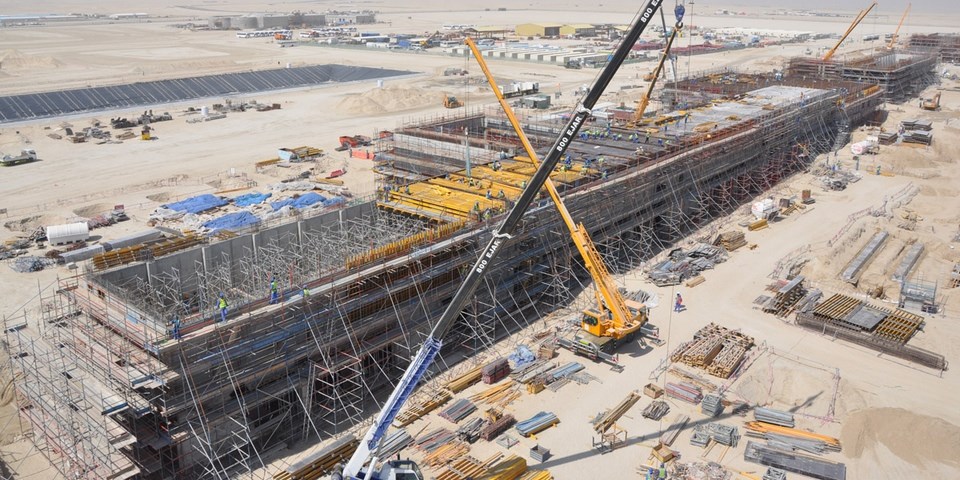VW: Mr. Volontè: what do you mean when you refer to bulk valves?
SV: By bulk valves we mean those valves which are not fitted with identification tags. These are typically “off-the-shelf” designs found in standard duties such as water, steam, etc, and found everywhere in the chemical plants, power plants, refining, etc. They are often made of common materials, such as carbon steel and low alloy steel as well as stainless steels, nickel alloys, etc. Although these valves are termed bulk items the coating that is applied is expected to be just as durable as for any other item installed inside the plant.
VW: What standards or agreements are typically used with regards to coatings?
SV: ISO 12944-2 refers to ambient corrosivity whilst ISO 12944-1 covers expected durability. Further, acceptance criteria such as the type of rust and blistering, etc, is often stipulated in the contract. Note that in ISO 12944-1 durability is expressed in terms of three ranges, namely low (2-5 years), medium (5-15 years) and high (more than 15 years) whereby the range is not a guarantee time. Durability is rather a technical consideration that can assist owners in establishing suitable maintenance programmes.
VW: So how do you address the need for protection during the engineering phase?
SV: To give an idea of scale, there are between 4,000 and 56,000 bulk valves in a typical project designed and constructed by Tecnimont. Most small bore valves and critical service valves are welded into place, whilst large bore and non-critical valves normally have flange connections. In the case of small bore welded valves the definitive coating is applied after installation as otherwise the coating could be easily damaged during on-site installation. During the engineering phase we evaluate the ambient corrosivity plus the expected durability and discuss this with the manufacturer. Warranty periods, acceptance criteria, etc, are part of the contract and have to be considered during the commercial phase.
VW: Why has corrosion protection become such a concern?
SV: Up until a few years ago the bulk valves reached the construction site with just a temporary primer with an expected durability of twelve months. After installation, the valve bodies were then properly prepared and the full painting system applied as per line pipe. However, nowadays bulk valves are either shipped to the construction site fully painted and ready for installation or coated at least with a definitive primer. In both cases, this requires additional effort from both the engineering company and the valve manufacturer in terms of valve management.
It is also necessary to consider the final colour code, which in effect becomes an additional variable. Other issues about surface preparation, painting and selection of painting system, which I think all parties should discuss, include the perception that the valve is considered as single piece of equipment. That may be acceptable if the valve is going to be used at ambient temperatures but can cause problems for the handwheel on high temperature valves because the coating for high temperature will not be fully cured and do not provide the expected corrosion protection if operated at ambient temperature. Also, abrasive blasting of the full assembly could damage any PTFE coating applied to bolts if not proper masked.
VW: What kinds of solutions might be considered?
SV: We would propose universal products such as inorganic copolymers or coatings with an inert multi-polymeric matrix, that cover the full range of temperatures both under insulation and on bare surfaces (as per NACE SP0918 coating system CS-6 and SS-6). However, to date we have not yet had any experience with such coatings. One our proposal that has been approved by one customer was to approach differently the delivery status of corrosion protection of carbon steel/low alloy steels from corrosion resistant alloys.
So, in this case we applied a primer only to the carbon/low alloy steel valves with a final coating being applied on site, whilst the valves made of corrosion resistant alloy were surface prepared with both the primer and the final coat being applied after installation at site. This approach is easier for the engineering company as it is easier to subdivide the total valve population although the valve manufacturer might have to make changes to the production line. Also, it will be necessary to evaluate who is liable, in case of failure, during warranty period and to stipulate this in the contract.
VW: Just a final thought: would it be an idea to simply tag all the valves?
SV: That would make the construction process so much more complicated and hence the project would be ultimately more expensive for the end user. Just as an aside, valves can sometimes leave the manufacturer’s facility and spend some months in transport, storage and installation before the plant is commissioned and started up. So, this raises additional questions : who is responsible for any damage to the valve or the coating during that time? And when does the valve warranty provided by the EPC start? These are all questions I’d like to see discussed by all parties involved.
Tecnimont S.p.A. is the main EPC contractor of Maire Tecnimont Group, an industrial player listed on the Milan Stock Exchange mainly active in the downstream hydrocarbons value chain, operating in approximately 40 different countries, numbering around 50 operative companies and a workforce of more than 8000 professionals.
Tecnimont’s well-rooted track record in engineering design, along with outstanding references in managing large integrated complex projects in Petrochemicals, Oil & Gas and Fertilizers enables the company to maintain a leading position as an international contractor. Thanks to a flexible business model, Tecnimont offers advanced skills in engineering services, EP and EPC (Engineering, Procurement, Construction). A strong technology orientation provides access to the best available state-of-the art processes, guaranteeing a recognized world leadership as a contractor.
Through its network of international engineering centres, Tecnimont provides clients with services and know-how ranging from conceptual studies, through technology selection, to process engineering and detailed design. Tecnimont can boast a historical track-record in polyolefins. Since 1970, the company has completed 117 polypropylene plants and 62 polyethylene plants, with a 30% market share in polyolefin plants (#1 worldwide for capacity installed in the last six years), including a 40% share in LDPE (Low Density Polyethylene). Tecnimont has access to all first-class polyolefins technologies and has the size and capability to manage and execute several projects simultaneously.
Quick facts about Maire Tecnimont Group
- Headquarters: Milan, Lombardy (Italy)
- Year founded: 2005
- Company type: Public Company
- Specialties: Engineering & Construction and Technology & Licensing for the downstream hydrocarbons industry
- Listed on the Milan Stock Exchange since 2007
- 8,000 professionals in 40 countries with 50 operating companies



